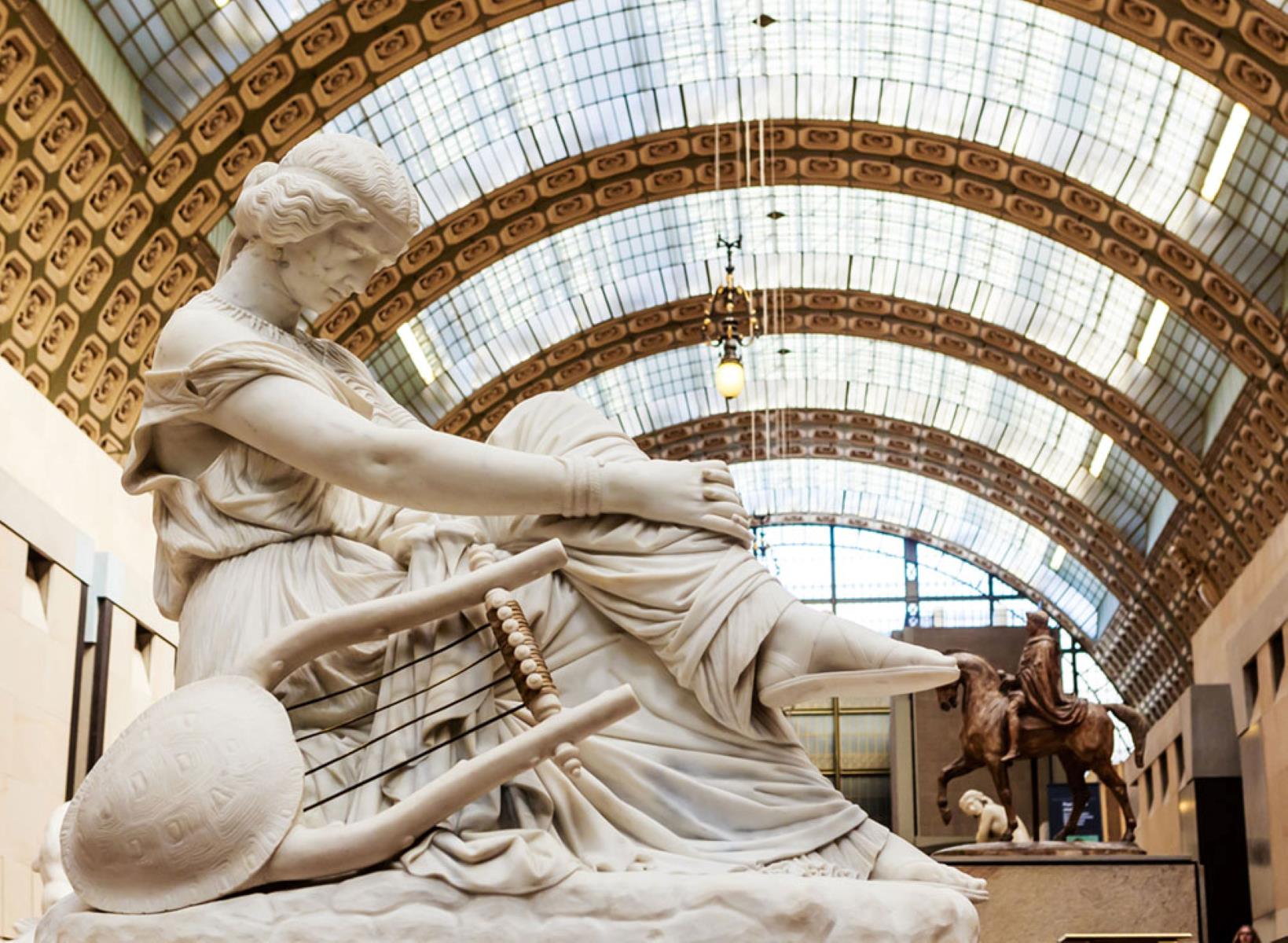
The Sappho statue is an intriguing and captivating landmark that holds great historical and cultural significance. As one of the most famous sculptures in the world, the statue has attracted the attention of art enthusiasts, historians, and travelers alike. Depicting the Greek poetess Sappho, known for her lyrical poetry and contributions to literature, this statue serves as a tribute to her artistic legacy.
In this article, we will delve into 12 intriguing facts about the Sappho statue that will further enhance your understanding and appreciation of this remarkable landmark. From its origins to its symbolism and influence, each fact will shed light on different aspects of the statue’s significance in the world of art and history.
Key Takeaways:
- The Sappho Statue in London honors the ancient Greek poetess, Sappho, and represents feminine power and creativity, inspiring artists and writers worldwide.
- Standing at 9 feet tall, the Sappho Statue, created in 1923, continues to attract thousands of visitors each year, offering a glimpse into ancient Greek culture and the enduring legacy of Sappho’s influence.
The Statue Honors The Ancient Greek Poetess, Sappho
The Sappho Statue is dedicated to the renowned ancient Greek poetess, Sappho. Known as one of the greatest lyric poets of her time, Sappho’s works have influenced generations of poets and writers.
The Sappho Statue Was Created By Sculptor Sir Gilbert Ledward
The magnificent statue was brought to life by the talented British sculptor, Sir Gilbert Ledward. His exceptional craftsmanship is evident in the intricate details and lifelike representation of Sappho.
It Stands Tall at 9 Feet
The Sappho Statue commands attention with its impressive height of 9 feet. This towering presence adds to the allure and grandeur of the artwork, making it a striking sight for all who encounter it.
The Sappho Statue Is Located in London
You can find the Sappho Statue in the heart of London, specifically at Victoria Embankment Gardens. Its central location makes it easily accessible to visitors from all over.
It Was Unveiled in 1923
The Sappho Statue was unveiled to the public in 1923, marking a significant moment in the recognition of Sappho’s contributions to literature and the arts. Since then, it has become a timeless symbol of inspiration.
The Statue Symbolizes Feminine Power and Creativity
One of the underlying themes of the Sappho Statue is the celebration of feminine power and creativity. It serves as a reminder of the importance of women’s voices and their significant impact on society.
The Sappho Statue Incorporates Art Nouveau Elements
The statue features distinct Art Nouveau influences, characterized by flowing lines, organic shapes, and a sense of movement. This artistic style adds an additional layer of beauty and elegance to the sculpture.
It Represents Sappho Holding a Lyre
In the sculpture, Sappho is depicted holding a lyre, the musical instrument often associated with her poetic talents. This representation emphasizes her role as a poetess and her mastery of the arts.
The Statue Has Weathered the Test of Time
Despite being exposed to the elements for nearly a century, the Sappho Statue has managed to retain its beauty and grace. Its durability stands as a testament to the craftsmanship and quality of the sculpture.
It Continues to Inspire Artists and Writers
The Sappho Statue serves as a muse for many artists and writers who have been captivated by its elegance and the powerful story it represents. Its influence can be seen in various forms of artistic expression.
The Sappho Statue Attracts Thousands of Visitors Each Year
The allure of the Sappho Statue draws in a significant number of visitors each year. People from all walks of life come to admire its beauty and pay homage to the extraordinary poetess it represents.
It Provides a Glimpse into Ancient Greek Culture
The Sappho Statue offers a glimpse into the rich culture and history of ancient Greece. It serves as a reminder of the enduring legacy of Greek literature and the impact it has had on the world.
These 12 intriguing facts shed light on the significance and beauty of the Sappho Statue. As a tribute to the legendary poetess and as a symbol of feminine creativity, this remarkable artwork continues to inspire and captivate audiences from around the globe.
Conclusion
The Sappho statue is an iconic landmark that holds a significant place in history. Its intriguing past, artistic beauty, and cultural symbolism make it an attraction worth exploring. Whether you’re a history enthusiast, an art lover, or simply someone looking to delve into the fascinating world of ancient Greece, the Sappho statue will captivate and inspire you. With its rich history, mysterious origins, and enduring allure, this statue stands as a testament to the enduring power of art and the human spirit.
FAQs
Q: Who is Sappho?
A: Sappho was a famous poet from ancient Greece who is often referred to as the “tenth muse.” She lived on the island of Lesbos in the 6th century BCE and is known for her lyrical poetry, which primarily explored themes of love and desire.
Q: Where is the Sappho statue located?
A: The Sappho statue is located in the ancient city of Mytilene, on the island of Lesbos, Greece. It is situated in a prominent position overlooking the harbor and is a popular attraction for visitors from around the world.
Q: Is the Sappho statue a replica?
A: Yes, the current Sappho statue is a replica of the original sculpture, which is believed to have been lost in antiquity. The replica was created based on historical descriptions and artistic depictions of Sappho from the ancient world.
Q: What is the significance of the Sappho statue?
A: The Sappho statue holds great cultural and historical significance as it pays homage to one of the most influential and revered poets of ancient Greece. It serves as a symbol of female empowerment, artistic expression, and serves as a reminder of the rich cultural heritage of Lesbos.
Q: Can I visit the Sappho statue?
A: Yes, the Sappho statue is open to the public and can be visited by tourists and locals alike. It is a popular destination for those interested in ancient history, art, and the legacy of Sappho.
Sappho's legacy extends far beyond her iconic statue. Uncover Ancient Greece's rich history and culture, where Sappho's influence flourished on the island of Lesbos. Explore how her poetry continues to inspire and captivate readers, transcending time and space.
Was this page helpful?
Our commitment to delivering trustworthy and engaging content is at the heart of what we do. Each fact on our site is contributed by real users like you, bringing a wealth of diverse insights and information. To ensure the highest standards of accuracy and reliability, our dedicated editors meticulously review each submission. This process guarantees that the facts we share are not only fascinating but also credible. Trust in our commitment to quality and authenticity as you explore and learn with us.


